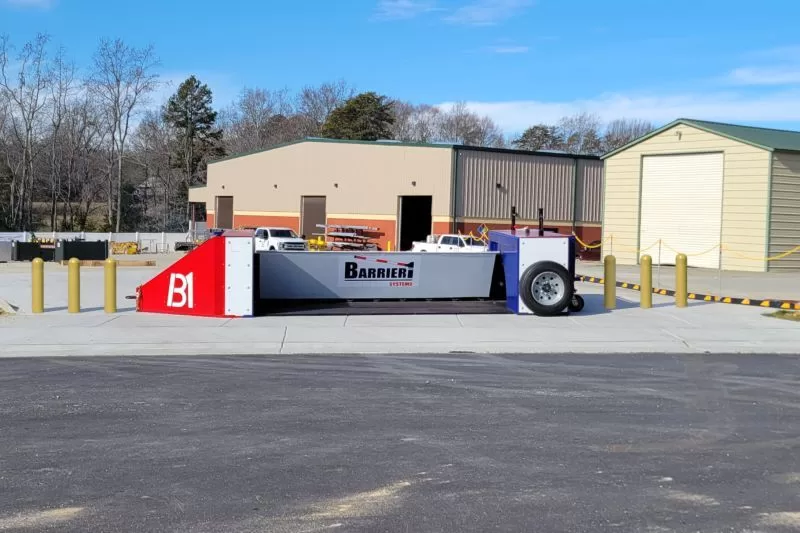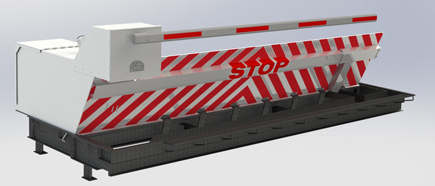The Ultimate Guide To Wedge Barriers
The smart Trick of Wedge Barriers That Nobody is Discussing
Table of ContentsWedge Barriers Things To Know Before You Get ThisThe Main Principles Of Wedge Barriers

About Wedge Barriers
The continuing to be force applied to
the cam web cam deploy the wedge plate 16 may might provided by an electromechanical actuator 84 or other actuator. The springtime assembly 54 and the actuator 84(e. Wedge Barriers. g., electromechanical actuator)may run together to equate the web cam and lift the wedge plate 16.
As stated above, the spring assembly 54 applies a continuous pressure on the webcam, while the electromechanical actuator might be managed to exert a variable pressure on the webcam, thereby allowing the training and reducing( i. e., releasing and withdrawing )of the wedge plate 16. In particular embodiments, the constant force used by the spring assembly 54 might be adjustable. g., electromechanical actuator) is impaired. As will certainly be valued, the springtime assembly 54 may be covered and secured from particles or various other components by a cover plate(e. g., cover plate 68 displayed in FIG. 4) that may be significantly flush with the raised surface area 38 of the structure 14. As stated over, in the released placement, the wedge plate 16 offers to obstruct access or travel beyond the barrier 10. The barrier 10(e. g., the wedge plate 16 )might block pedestrians or cars from accessing a building or pathway. As gone over over, the obstacle 10 is affixed to the anchor 30 protected within the foundation 14,

front brackets 71. Because of this, the linkage settings up 72 may pivot and rotate to enable the collapse and expansion of the affiliation assemblies 72 throughout retraction and implementation of the bather 10. The affiliation assemblies 72 reason movement of the wedge plate 16 to be limited. For example, if a car is traveling my latest blog post in the direction of the deployed wedge plate 16(e. For instance, in one condition, the safety and security legs 86 may be expanded throughoutmaintenance of the barrier 10. When the safety legs 86 are released, the safety and security legs 86 sustain the weight of the wedge plate 16 versus the surface 12. As a result, the lifting system 50 may be shut down, serviced, gotten rid of, changed, etc. FIG. 5 is partial viewpoint sight of a personification of the surface-mounted wedge-style obstacle 10, showing the camera 80 and the camera surface areas 82 of the lifting system 50. Particularly, two cam surfaces 82, which are described as reduced web cam surface areas 83, are placed listed below the webcam 80. The lower webcam surfaces 83 might be fixed to the surface 12 (e. As an example, the reduced web cam surface areas 83 and the placing plate 85 might develop a single item that is protected to the support 30 by screws or other mechanical fasteners. Additionally, two cam surfaces 82, which are described as upper cam surface areas 87, are placed above the cam 80 and coupled to (e. In other personifications, interfering layers or plates might be placed in between the surface area 12 and the reduced webcam surfaces 83 More hints and/or the wedge plate 16 and the upper web cam surface Learn More areas 87 As stated over, the camera
80 translates along the web cam surfaces 82 when the wedge plate 16 is raised from the withdrawed setting to the deployed placement. In addition, as discussed over, the springtime assembly 54 (see FIG. 3 )might offer a force acting upon the cam 80 in the instructions 102 by means of spring pole 58, which may lower the force the electromechanical actuator 84 is called for to apply to the webcam 80 in order to activate and lift the wedge plate 16. 1 )to the released setting(see FIG. 4). As revealed, the webcam 80 consists of track wheels 104(e. g., rollers), which get in touch with and convert along the camera surface areas 82 during procedure.